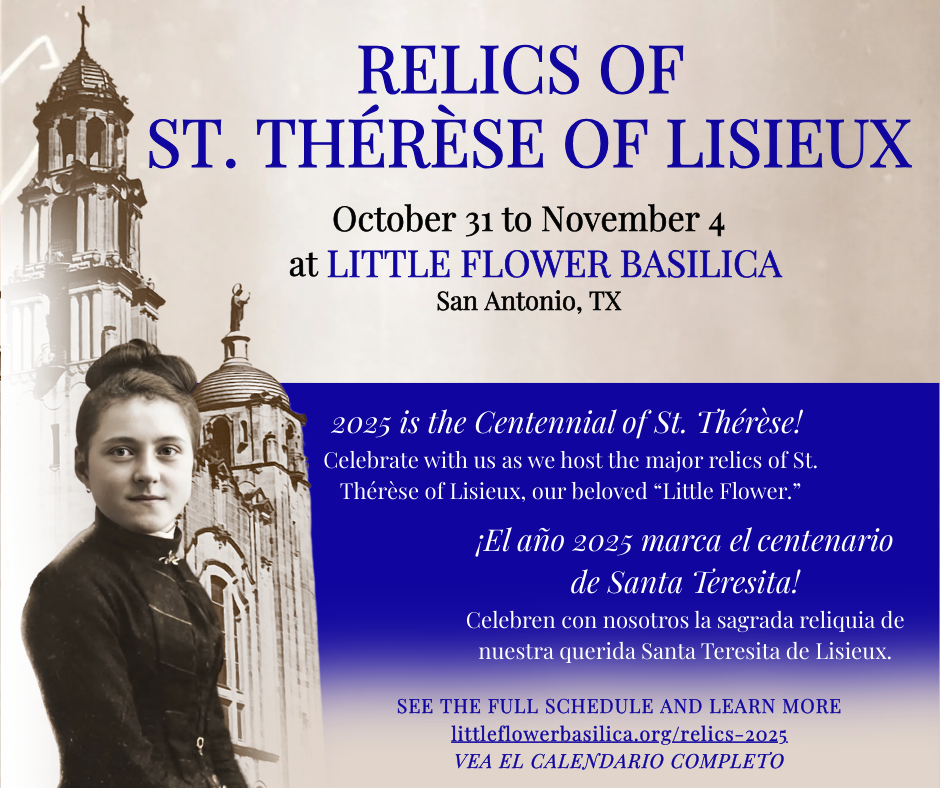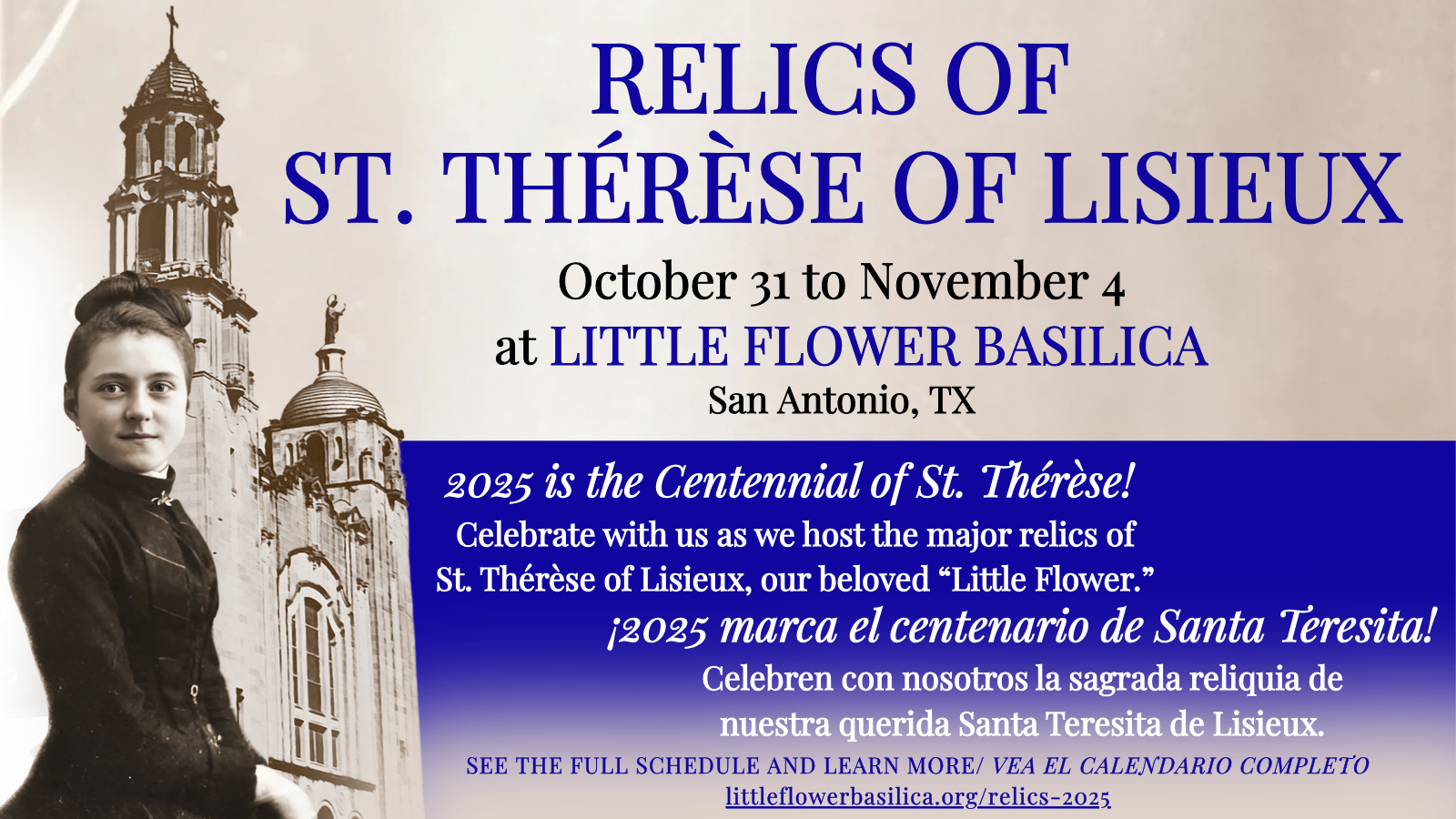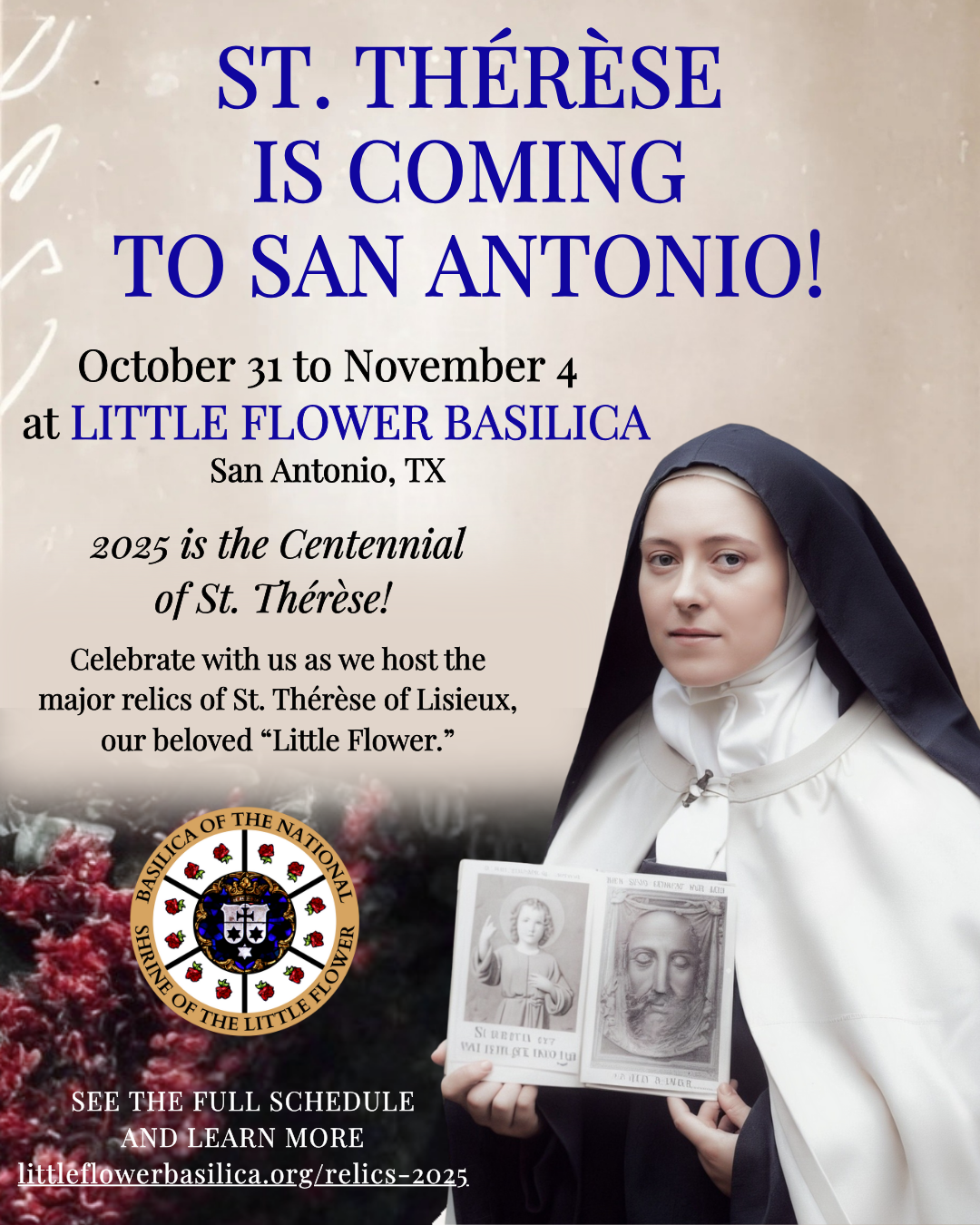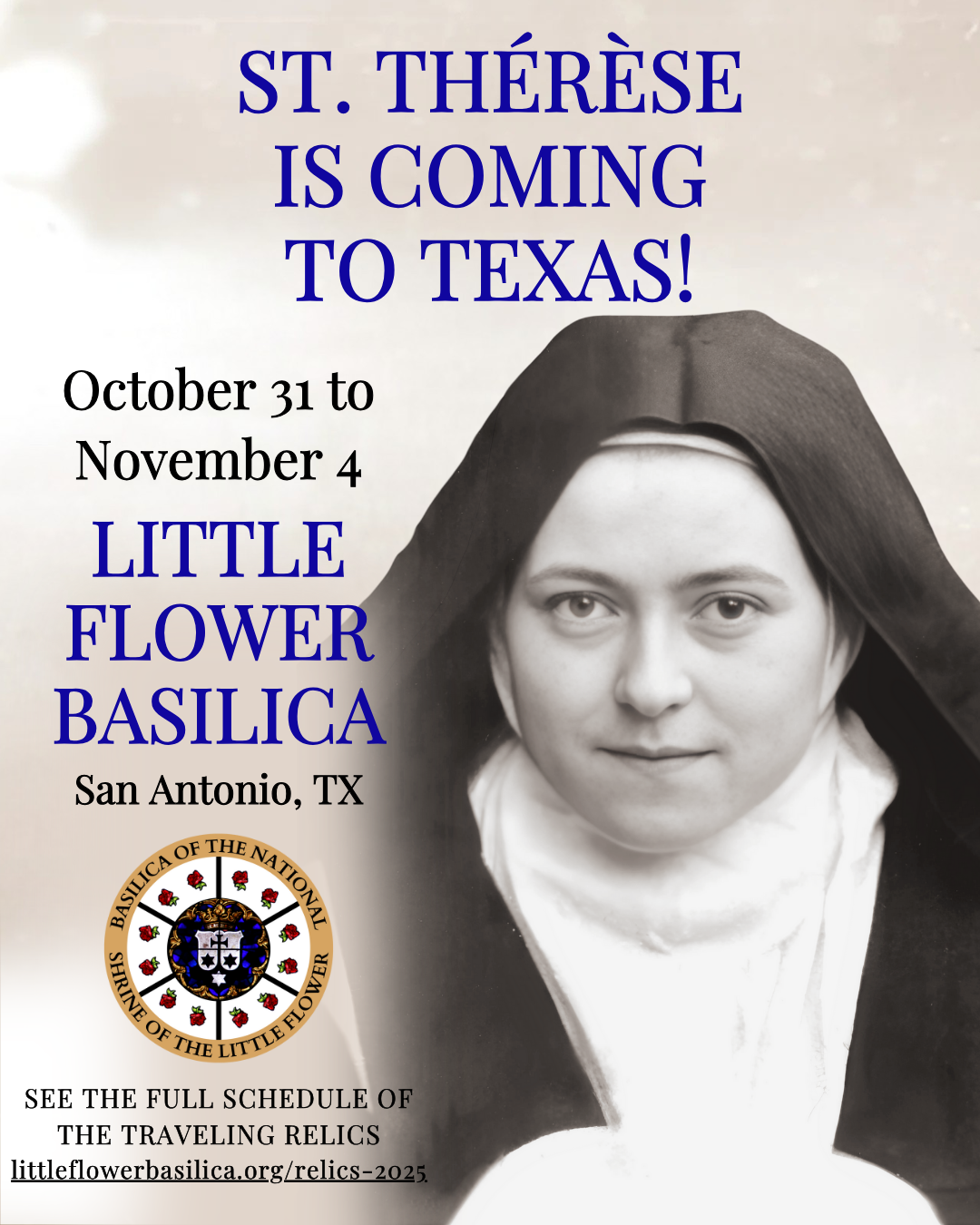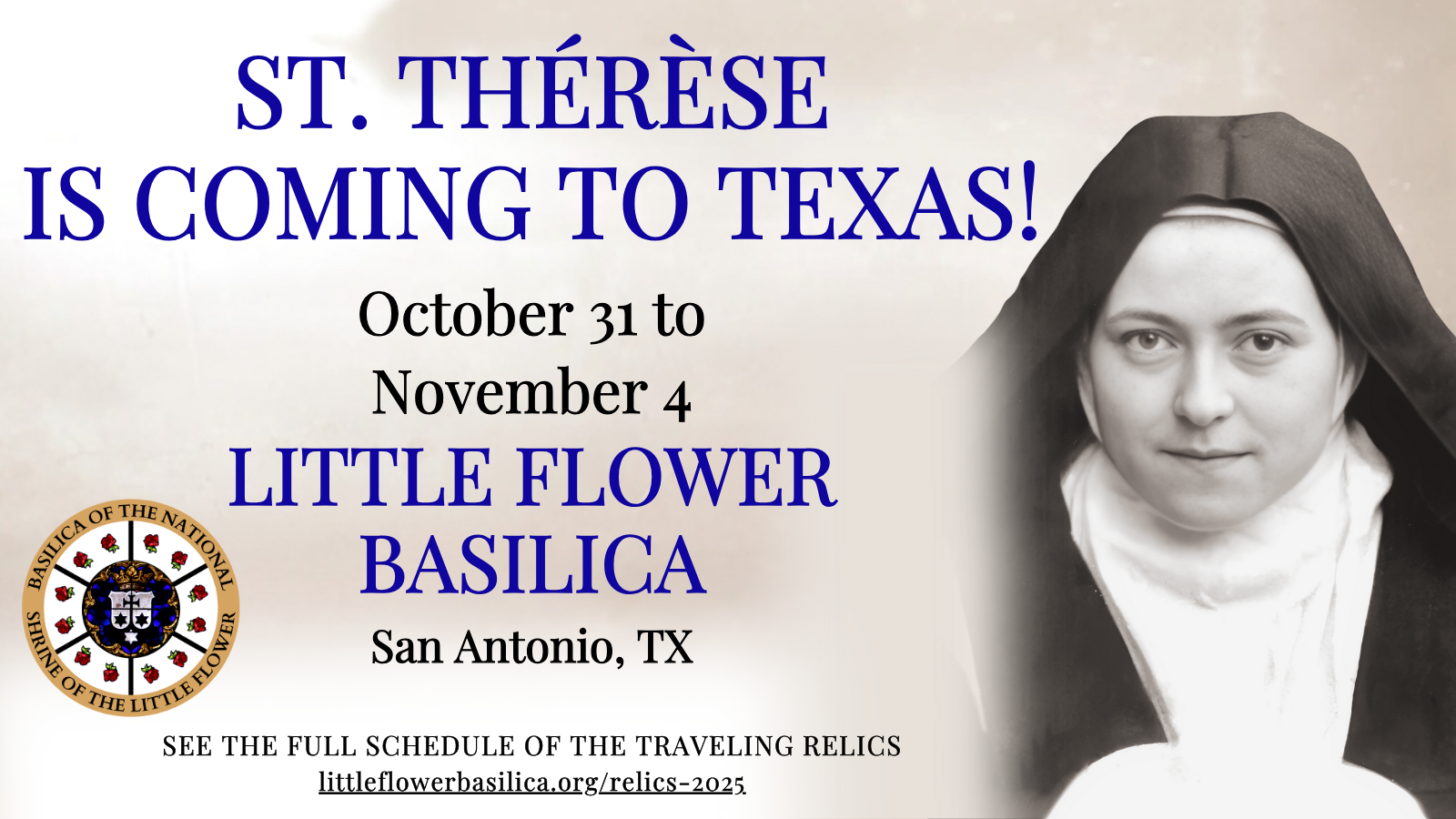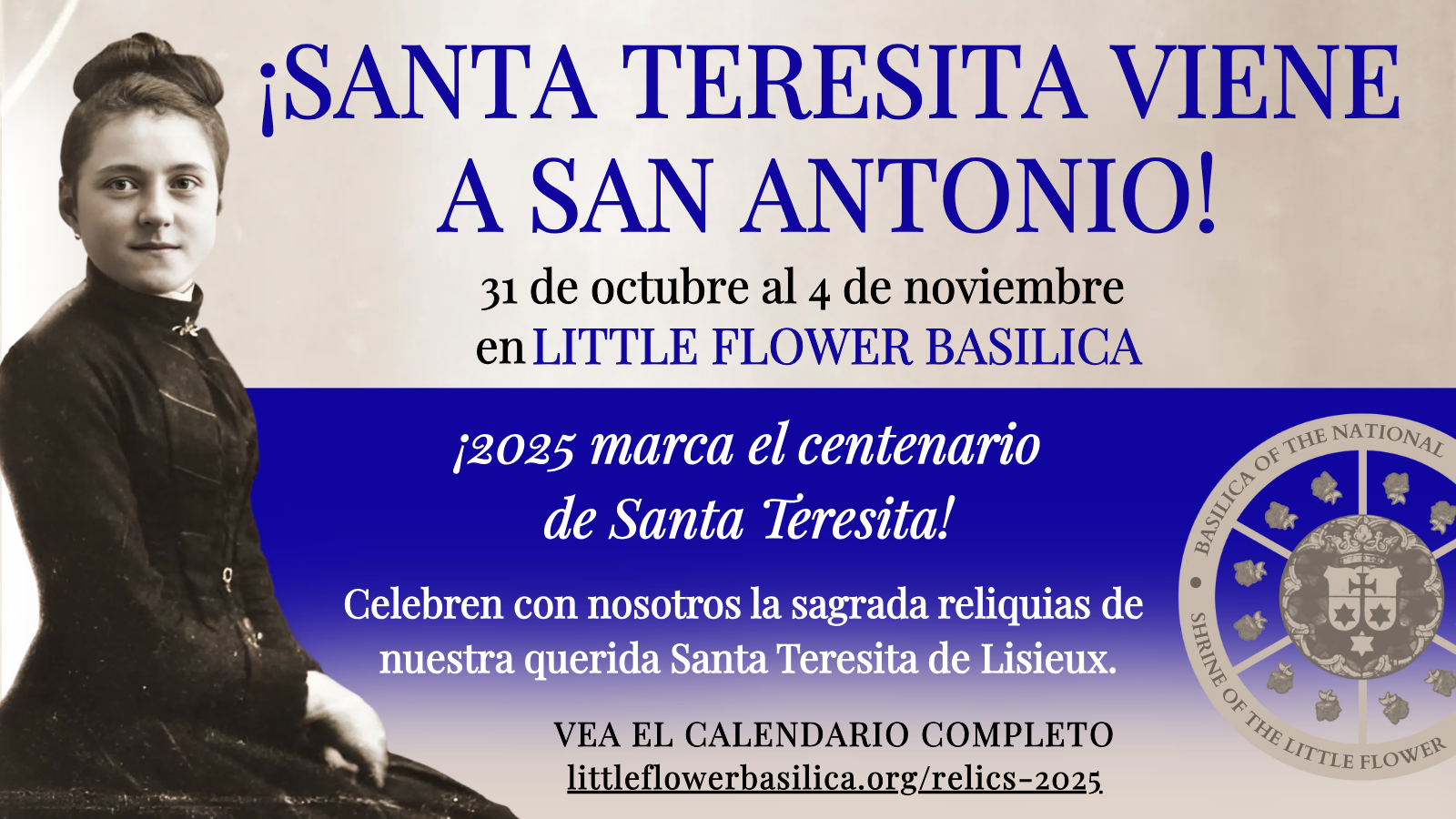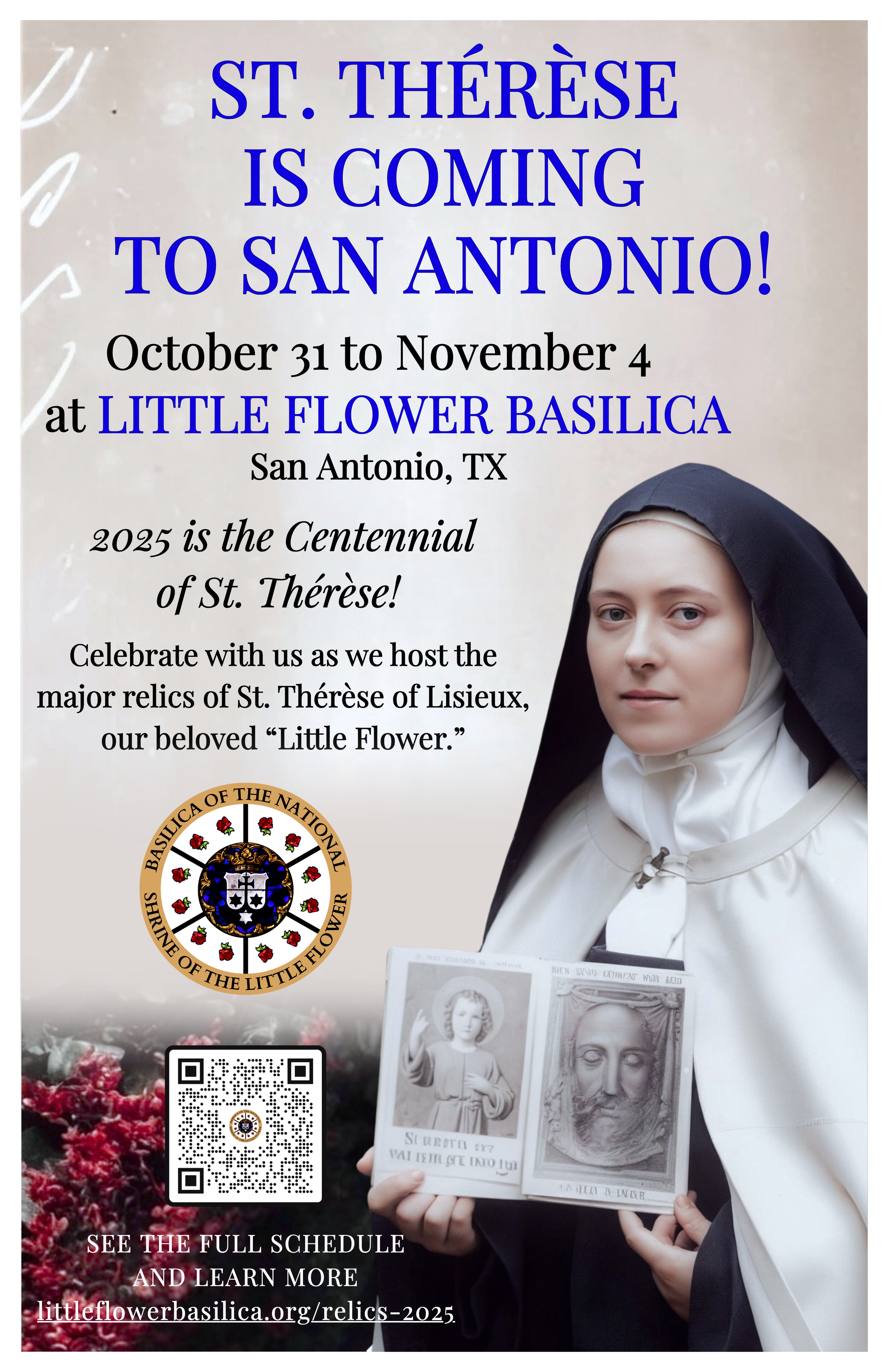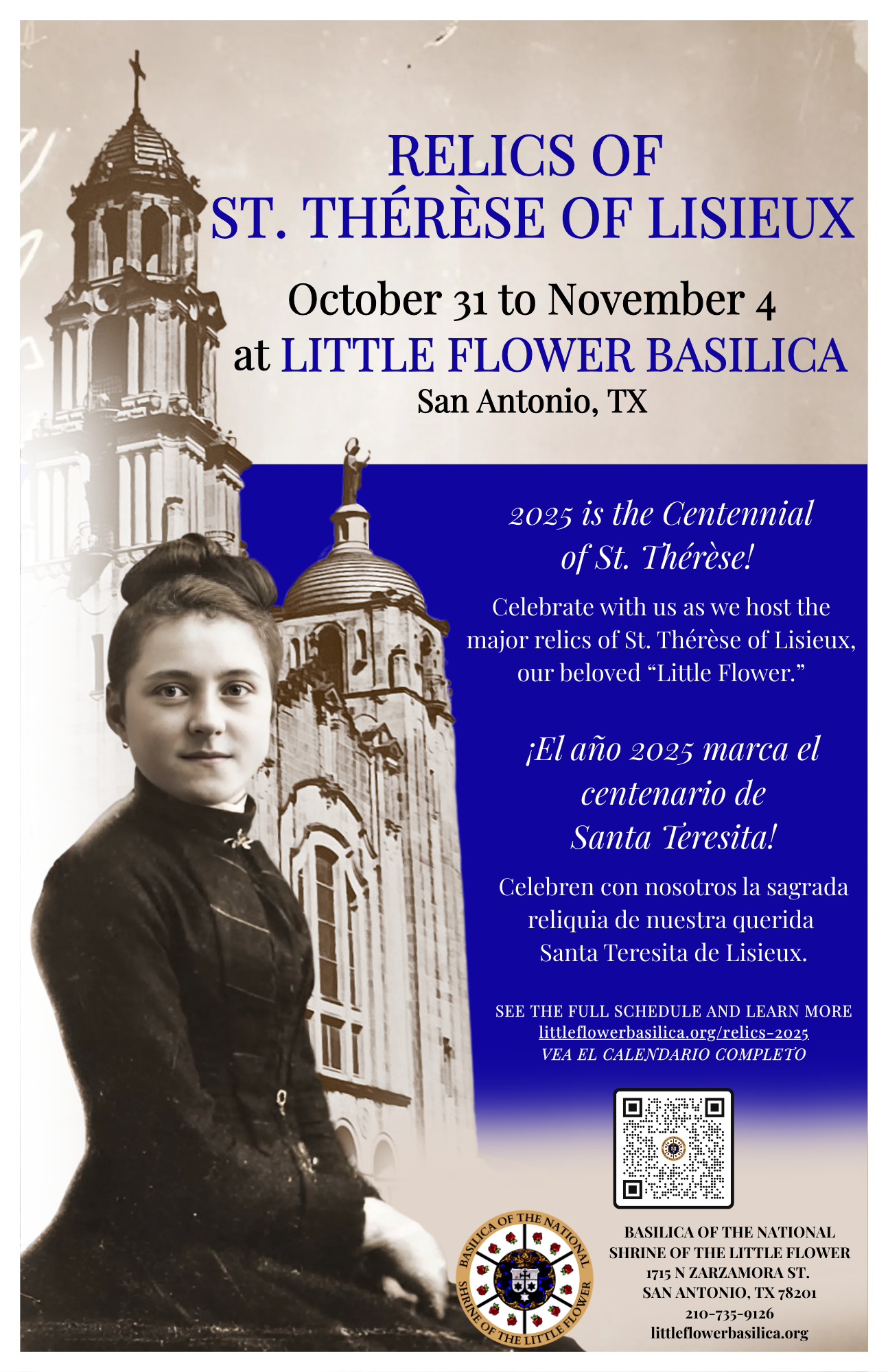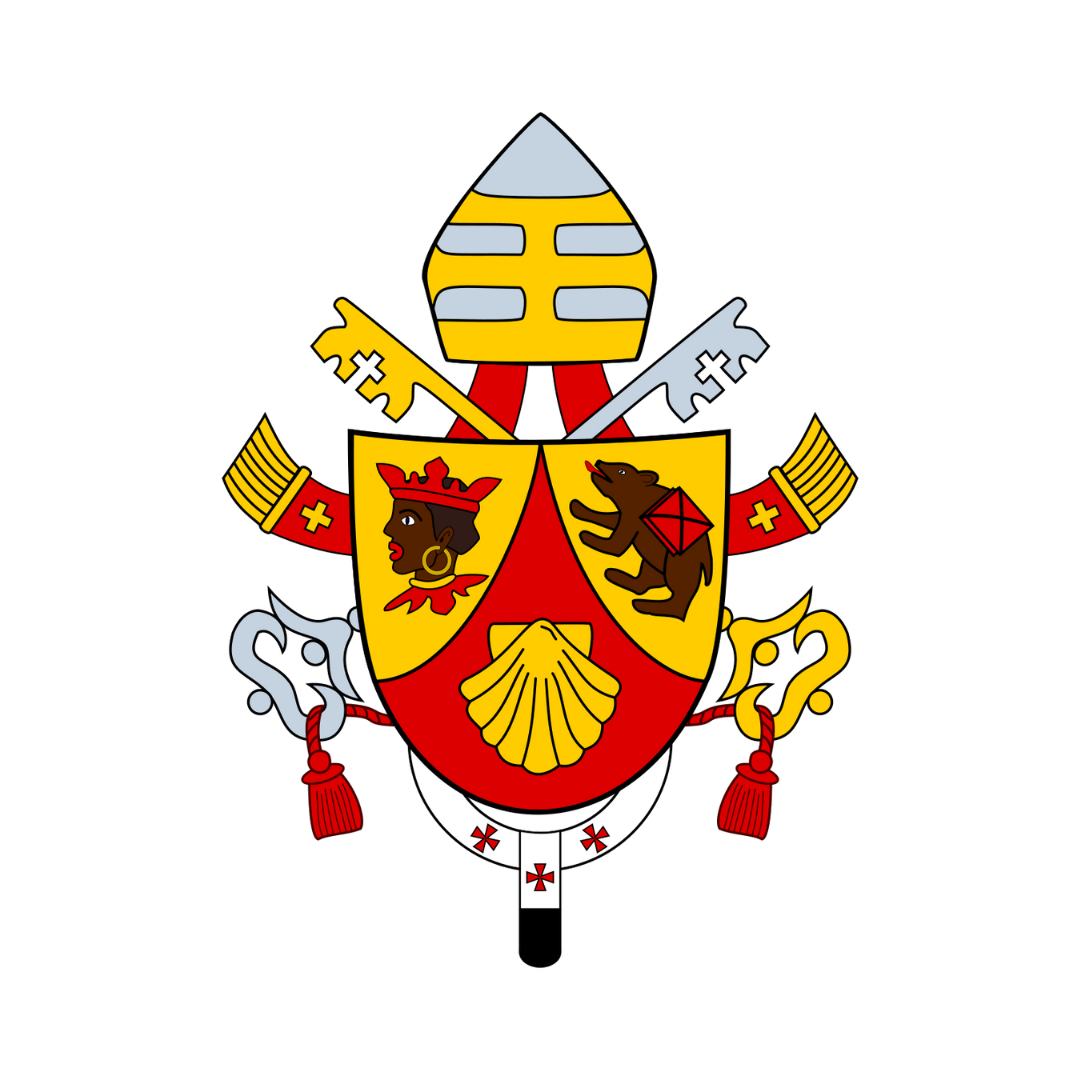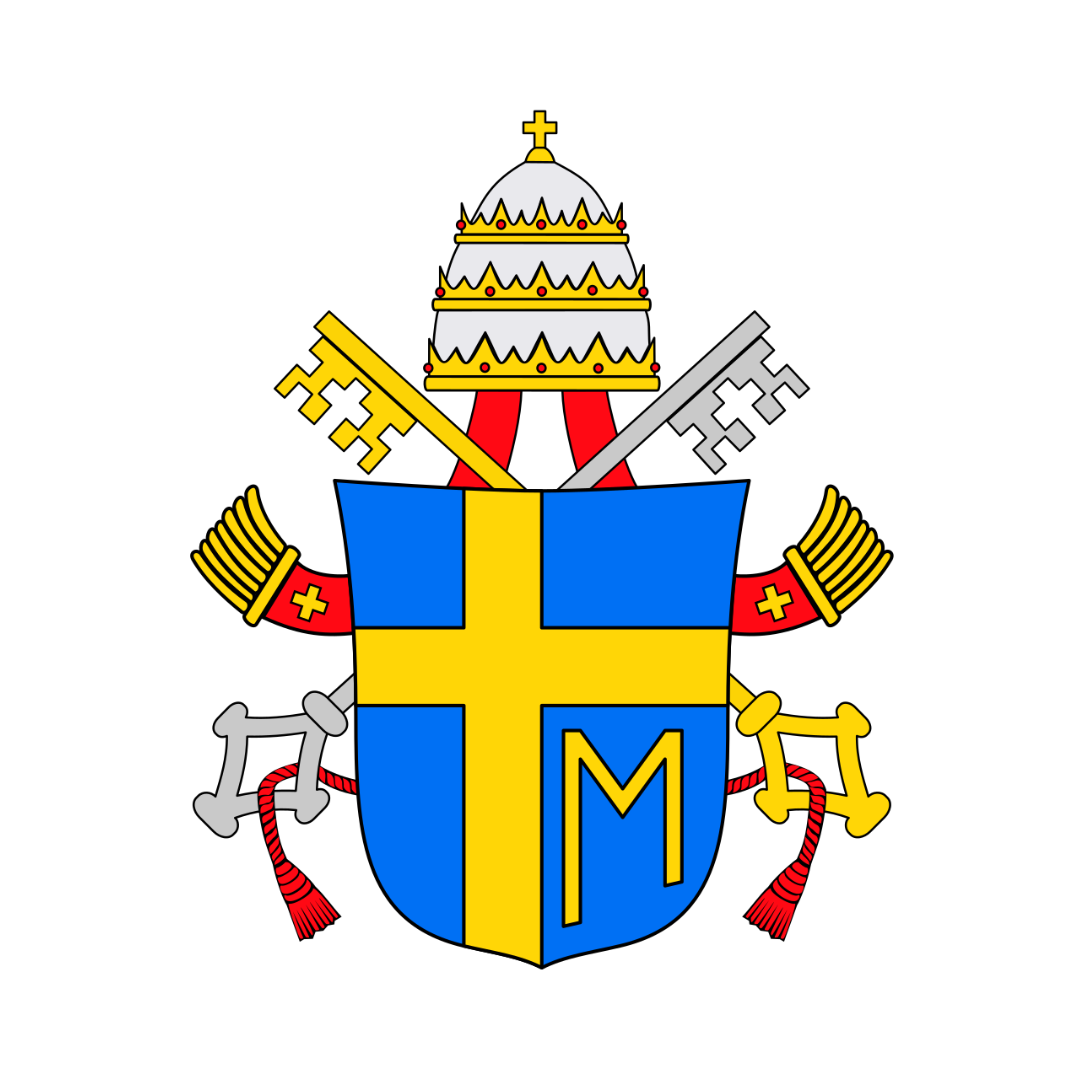Little Flower Basilica and the Discalced Carmelite Friars welcome the Traveling Relics of St. Thérèse!
Help us spread the word about this once in a century event with these resources below!
Text & Captions to Share
St. Thérèse is coming to San Antonio! Encounter her major relics October 31 to November 4 at Little Flower Basilica. See the schedule and learn more at https://littleflowerbasilica.org/relics-2025
2025 is the Centennial of St. Thérèse! Celebrate with the Discacled Carmelites as Little Flower Basilica hosts the major relics of our beloved “Little Flower” October 31 to November 4. See the schedule and learn more at https://littleflowerbasilica.org/relics-2025
The Major Relics of St. Thérèse of Lisieux are coming to Texas! October 31 to November 4 at Little Flower Basilica. See the schedule and learn more at https://littleflowerbasilica.org/relics-2025
¡Santa Teresita viene a San Antonio! Descubre sus reliquias principales del 31 de octubre al 4 de noviembre en la Basílica de Santa Teresita. Vea el calendario y obtenga más información en https://littleflowerbasilica.org/relics-2025
Press Releases & Bulletin Resources
Social Images
Print Materials
English Letter 8.5” x 11”
English Tabloid 11” x 17”
English Legal 8.5” x 14”
Bilingual Tabloid 11” x 17”
Bilingual Letter 8.5” x 11”
Bilingual Legal 8.5” x 14”
Learn More
-
What is a relic? A relic is the body, a part of the body, or some personal memorial of a saint preserved as worthy of veneration. A reliquary is a container for relics.
First-Class Relic: physical remains of a saint (e.g. bone, hair).
Second-Class Relic: personal effects of a saint, something they owned or frequently used (e.g. clothing, book, rosary).
Third-Class Relic: object that has touched a first-class relic.
Relics are explicitly biblical:
So Elisha died, and they buried him. Now bands of Moabites used to invade the land in the spring of the year. And as a man was being buried, lo, a marauding band was seen and the man was cast into the grave of Elisha; and as soon as the man touched the bones of Elisha, he revived, and stood on his feet. (2 Kings 13:20-21)
And God did extraordinary miracles by the hands of Paul, so that handkerchiefs or aprons were carried away from his body to the sick, and diseases left them and the evil spirits came out of them. (Acts 19:11-12)
Learn more: Catholic Answers; National Catholic Register; Ascension Press
-
A shrine is a church or other sacred place where either a relic is preserved or where an apparition or historical event of faith has taken place.
A shrine is typically designated to help foster devotion to a particular saint. The Basilica of the National Shrine of the Little Flower (a basilica and a shrine) was built to foster devotion to Our Lady of Mount Carmel and St. Thérèse.
National shrines are designated as such by the United States Conference of Catholic Bishops (USCCB).
-
The Carmelite Order has its origins on Mount Carmel in the Holy Land with the coming together of a group of hermits in the early 13th Century, forming the first religious order in the West to be named for the Virgin Mary - the Brothers of the Blessed Virgin Mary of Mount Carmel. The reform of the Order by St. Teresa of Jesus (commonly known as St. Teresa of Avila) undertook to provide the Church with a manifold service of prayer, contemplation, and apostolic activity. The Discalced Carmelite Friars, Nuns, and Seculars continue this contemplative mission today, seeking union with God and sharing their charism and spirituality with the Church and the world.
Learn more about the Discalced Carmelites and their vocation here.
The Popes on St. Thérèse
“. . . was Saint Thérèse of the Child Jesus and of the Holy Face not the great Doctor of scientia amoris that our world needs, she who “breathed” the Name of Jesus at every moment of her life, with spontaneity and freshness, and who taught the little ones an “easy” way to access it?”
Pope Leo XIV
“In the heart of Thérèse, the grace of baptism became this impetuous torrent flowing into the ocean of Christ’s love and dragging in its wake a multitude of brothers and sisters.”
Pope Francis
“Her lovable, smiling charity was the expression of the profound joy whose secret she reveals: “Jesus, my joy is loving you” . . . Thérèse points out to us all that Christian life consists in living to the full the grace of Baptism in the total gift of self to the Love of the Father, in order to live like Christ, in the fire of the Holy Spirit, his same love for all the others.”
Pope Benedict XVI
“Thérèse of the Child Jesus and the Holy Face is the youngest of all the "doctors of the Church" , but her ardent spiritual journey shows such maturity, and the insights of faith expressed in her writings are so vast and profound that they deserve a place among the great spiritual masters.”
St. Pope John Paul II








